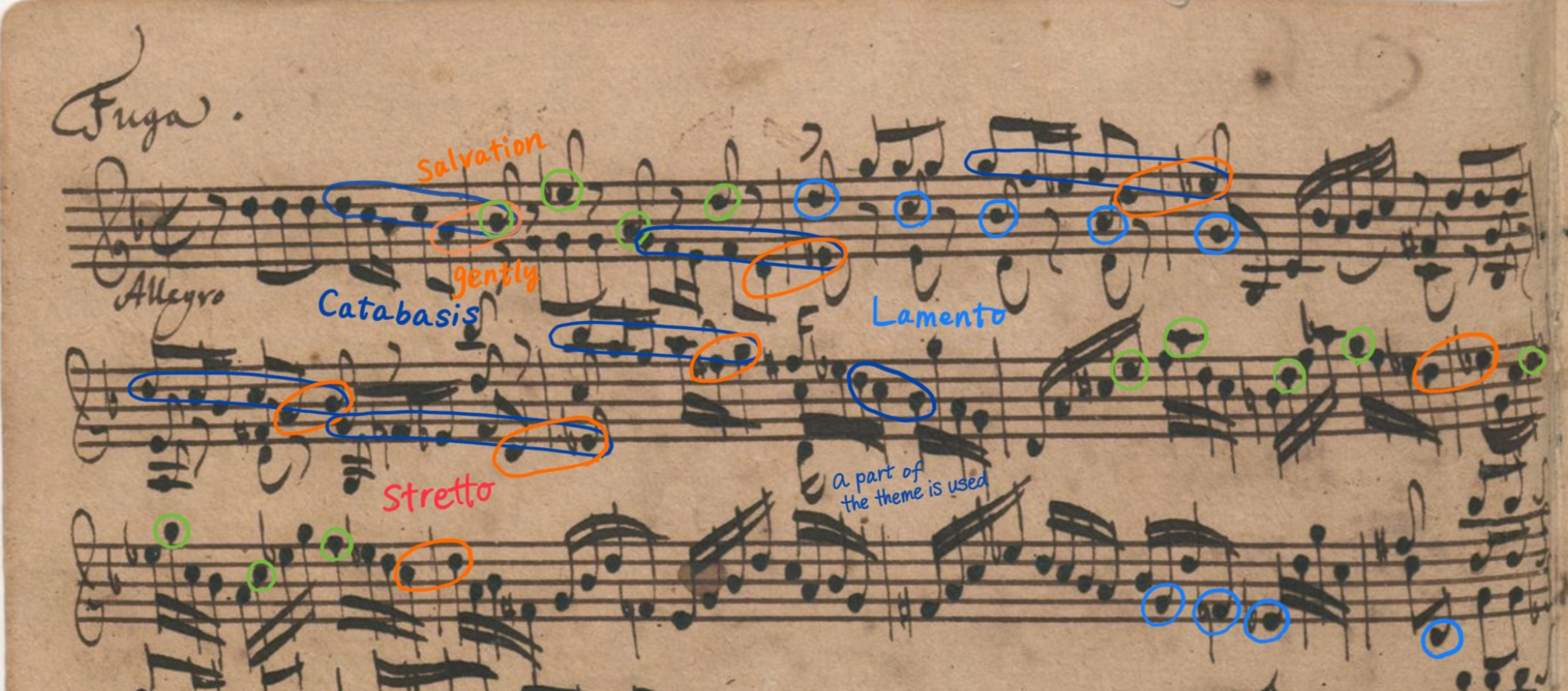back to Table of contents
II. Fuga, Allegro
Etymology of "Fuga": Rachel Podger described in her masterclass: "The idea behind the character of 'Fuga' in English means 'escape.' In Italian, 'fugare' conveys a sense of movement, lightness, and forward motion."
The theme contains Catabasis, which Bartel writes: a descending musical passage which expresses descending, lowly, or negative images or affections.1 Prof. Terakado explains that while there is a catabasis in the theme, there is also a small salvation motif that rises by a semitone, which should be played gently.
beginning of Fuga, manuscript by Bach himself, with my memo.
https://www.bach-digital.de/receive/BachDigitalSource_source_00001955, last visited 24th February, 2025.
The combination of Adagio first movement and fugal second, common in sonatas in the Corelli tradition, forms a prelude and fugue pair.2
Joel Lester says, "Composers paired preludes and fugues for both aesthetic and practical reasons. Theorists in the Baroque period drew many of their images of musical structure from rhetoric— the art of verbal persuasion and the skill of organizing an argument to captivate an audience. In a well-made fugue, the composer coaxed the argument of an entire composition out of a single, often quite short, unaccompanied subject. [...] A fugue's dense musical argument was not to be thrown at an unprepared listener. Before a lone voice enters with a fugue subject, composers set the stage with a prelude that both prepares for the fugue— establishing the key and setting the range of instrumental color(s)-and is also a foil to the fugue. Next to the tight contrapuntal texture of fugues, preludes were often improvisatory. The prelude-plus-fugue pair forms an entity far greater in expressive and structural power than either movement by itself. Composers and performers— often the same person—could demonstrate their ability to be free in one movement and then create a tightly argued web of musical topics in the other."3
After the contemplative musical journey of the Adagio, the Fuga emerges with a heightened sense of urgency and a profound sense of searching. On the violin—a small yet remarkably expressive instrument—Bach not only expands the boundaries of his artistry but also conveys his rhetorical message with exceptional ingenuity, crafting a fugue of extraordinary depth using only four strings.
_______________
1Dietrich Bartel, Musica Poetica Musical-Rhetorical Figures in German Baroque Music (Lincoln and London: University of Nebraska Press, 1997), p.214
2David Ledbetter, Unaccompanied Bach : performing the solo works (Yale University Press, 2009), p.100
3Joel Lester, Bach’s Work for Solo Violin- Style, Structure, Performance (USA, Oxford University Press, 2003), pp.25-26.
Next: Conclusion
back to Table of contents
